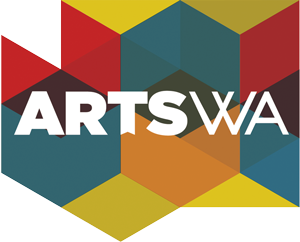
Home » Journal Articles » Thoughts & Opinions » Member Viewpoint: Art & Politics – March/Apr 1999
The recent Governor’s Blue Ribbon Arts Task Force determined that ” … Washington’s state funding is at the bottom in comparison to other states “.1 The Seattle PI. confirmed that, “Despite its big artist population, Washington ranks 48th out of 50 states in per capita spending on the arts “.2
With such an embarrassing statistic, it is important that Washington work to develop her own artists. Washington State has a legal responsibility to support “the viable development of her artists and craftsmen” (RCW 43.46.090).
An Artist Trust survey revealed that there are 40,000 (self-proclaimed) artists working in Washington State. The Governor’s Blue Ribbon Arts Task Force report states that “Washington is blessed in having an extraordinarily talented community of artists … “. 1

By contrast, the Washington State Arts Commission (WSAC) has determined that only 312 Washington artists are good enough to even be considered for art purchase opportunities by local selection committees. The high quality of much of the artwork rejected by the WSAC would amaze all but the most critical of contemporary art elitists. The data shows that there are very few Washington artists brought on each year and … a smaller group yet has access to a huge number of low budget opportunities.
There are three issues of concern:
1. The WSAC has chosen to interpret State law in such a way as to severely restrict opportunities to all but a few Washington State artists.
2. The WSAC’s centralized control of art selection disempowers local selection committees.
3. Repeated purchases of familiar artists by the WSAC has limited the diversity of the State art collection.
The Exclusive Club
The Washington State Art in Public Places Program (AIPP) “develops, inventories, maintains and presents to the public the state art collection.” AIPP maintains an Artists Resource Bank(ARB), the roster of artists (and only these artists) are eligible for state-funded purchases and commissions.
Once in the ARB, an artist may stay in. Thus, this exclusive club continues to be promoted for potentially thousands of purchase opportunities over decades. All that is required is for these artists to update their slides.
265 artists (1 02 out-of-state) have been in the ARB continuously for more than 10 years.3
39 artists (17 out-of-state) have been with the WSAC for more than 20 years.3
There are currently 548 artists (all media) in the ARB: 57% (312) Washington State and 43% (236) out-of-state artists.4
Every two years artists are invited to submit samples of art for review. This art is then “screened by art selection panels and approved by the commission”.
In the last ten years an average of only 19 Washington State artists and 18 out of-state artists have been added to the ARB each year.3
These “exclusive provider” ARB artists are eligible and promoted for hundreds (thousands over time) of exclusive public-art sales opportunities, big and small, each biennium. Each time a Washington artist is rejected, they are rejected for more than 400 (10 year average opportunities.6
This “all-or-nothing” condition is unprecedented in America’s percent-for-the-arts programs. Most states’ arts councils have open competitions for each installation project, or maintain an open registry that is used directly by the local selection committee to identify a smaller pool of potential artists for the project.’ By contrast, Washington’s local selection committees make their selections only from the centrally controlled ARB (all projects under $100,000).
Few states offer opportunities equitably, if at all.
It is important to note that of the 236 out-of-state ARB artists, 125 (23% of total ARB) come from states without any public art program whatsoever. Additionally, the vast majority of out-of-state ARB artists reside in states that either totally or severely restrict their programs to benefit their own state’s artists. Yet, out-of-state ARB artists can potentially be eligible for a11 high and low budget opportunities, while (non-ARB) Washington artists are ineligible for any public opportunities in their own state.
Lower budget opportunities not available.
Washington State processes approximately ten times the number of public art opportunities than do most other states.’ This is due to the fact that the “common” public school projects (usually lower budget) run through the WSAC. This significant fact does not in any way help Washington State artists who are not in the ARB.
When local agencies have funds available to purchase “existing works” (average price under $2000), “the … agency nominates its own art selection committee who is empowered to make all decisions regarding artist and/or artwork”.“
This local committee is shown approximately 480 slides of work by roughly 120 artists.9 During the 1998 biennial period, for example, 261 works were purchased from 120 artists.6 In other words, virtually all artists presented for consideration, made a sale (and many made multiple sales).
In effect, the centralized WSAC (or assignees) preselects a tiny “quality pile of public art”, then turns this pile over to the local selection committees (usually schools) who divvy up the pile.
This process is hailed by the WSAC as a way to empower local committees so that “artist selection by local site-based committees assures diversity.4
No one can fault WSAC staff attempting to “do more with less”, but the process presented here demonstrates nothing more than administrative expediency, in combination with state-control of creative expression in public art, at the expense of diversity.
Repeated Purchases
Some ARB artists have more than 20 works in the State art collection while others have received multiple purchase awards totaling more than a 1/4 of a million dollars.’ Yet, State law reads, ” In order to achieve a diverse state art collection, which represents the varied means of contemporary art-making processes, priority consideration may be given to artists who are, not represented in the state art collection.” (WAC 30.40.070, Sec.4).
It is ironic that many familiar-name artists have bad their reputations greatly assisted by the ongoing support of the WSAC. It’s time for more diversity in artistic expression by offering opportunities more broadly.
It’s Time for a New Vision
The highly restrictive WSAC art selection process, while possibly achieving the goal of acquiring a nationally recognized art collection, falls short of its legally mandated responsibility to develop the professional careers of Washington artists. If the WSAC had been fostering the “viable development” of this State’s artists these past decades, there would be less need to search out-of-state for work of the “highest artistic merit”.
The WSAC might consider a more progressive vision, that of Washington artists setting national standards of excellence through increased access to opportunities.
To rectify any inequity in opportunities to under-represented Washington State artists, the WSAC ” … recommends expanded agency technical assistance efforts” in the form of workshops “at a reduced price”, a handbook designed “to assist artists in applying and being accepted into the ARB” and a web page to access information and ARB applications (that can be downloaded). 4
Under-represented state artists need access to lower budget opportunities as building blocks to to give them the experience required for larger commission projects. They don’t need more workshops … or subsidies. There is no argument that the largest percentage of overall art purchases are of works by Washington artists. However, of greatest concern, is the need to increase access to the lower budget opportunities. Regarding higher budget sales, a survey of WSAC records (1987-1997) reveals that 64% of purchases over $50,000 went out-of-state6
Clearly the WSAC-AIPP uses its discretionary powers unwisely. The politics of state-controlled artistic taste has gone beyond what is acceptable in a democratic society.
Freedom of artistic and cultural expression and freedom of aesthetic decision making (by local selection committees) is at stake. It is now time to pressure our Washington State representatives to work on the behalf of this State’s citizens and professional artists. State law needs to be rewritten to narrow WSAC discretionary powers toward this State’s legal responsibility to foster the interest in: ” … the viable development of her artists and craftsmen.” as expressed in our state legislation.
Consider writing articles for your local arts council newsletters. And please, contact your State representatives and urge them to direct the Washington State Arts Commission (WSAC) to revise its policies, so as to allow a greater diversity of creative expression by Washington State artists for art-in-public-places.
Footnotes:
1. WSAC; Investing in the Arts, Governor’s Blue Ribbon Arts Task Force, 8/J 998
2. Seattle Post-Intelligencer, Doug McLennan, E-I, 2/J/99
3. WSAC; Active Artist Resource Bank Profile, 1974-1 998 inclusive, 1/14/99
4. WSAC; Memo, To: WSAC, From: WSAC- AIPP Staff, Re: Petition, 2/22/99
5. Washington Administrative Code -WAC 30.40.070, Section 3-(d)
6. WSAC; Arts Commission, Tag # Report, Owned and Leased Assets, 75′-98′,1/13/99
7. WSAC; National Assembly of State Arts Agencies, Fax to Beverly Watt, 10/6/98
8. WSAC, Web-site: http://www.wa.gov/artl.ArtlnPublicPlaces.Info. For Partners
9. WSAC; Response to inquiry, Beverly Watt, Program Manager, AIPP, 1/14/99
NOTE – For copies of the above WSAC documents: call (360)753-3860 or email KrisT@WSAC.WA,GOV







We need some kind of descriptive text here.